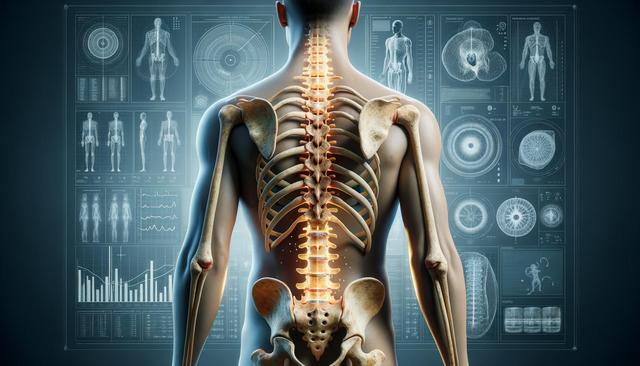Understanding the Link Between Osteoporosis and the Spine
Osteoporosis is a condition characterized by a decrease in bone density, making bones more fragile and susceptible to fractures. The spine, composed of 33 vertebrae, is particularly vulnerable to the effects of this condition. When osteoporosis affects the spine, it can lead to compression fractures, postural changes, and chronic pain. For many individuals, these spinal changes can significantly impact mobility and quality of life. Understanding this connection is the first step in managing and preventing complications. Those asking how to improve bone density in the spine should consider both medical and lifestyle approaches that support bone health throughout aging.
Common Spinal Complications Related to Osteoporosis
The vertebrae in the spine bear much of the body’s weight and are essential for posture, movement, and protection of the spinal cord. When osteoporosis weakens these bones, several complications may arise:
- Vertebral compression fractures, often occurring without a noticeable injury
- Loss of height due to collapsed vertebrae
- Kyphosis, or forward curvature of the upper spine
- Chronic back pain from structural changes and nerve compression
These issues can hinder daily activities and overall well-being. Early diagnosis and targeted care, such as a dedicated osteoporosis physical therapy program, can help mitigate these risks and maintain function.
The Role of Physical Therapy in Spinal Health
Physical therapy plays a central role in managing osteoporosis, particularly when it involves the spine. A well-structured osteoporosis physical therapy program is designed to strengthen muscles, improve posture, and reduce the risk of falls and fractures. Therapists use a variety of techniques such as:
- Weight-bearing and resistance exercises
- Posture correction and spinal alignment training
- Balance and coordination activities
- Education on safe movement and lifting techniques
Searching for physical therapy for osteoporosis near me can connect individuals with specialists who understand the unique needs of aging spines. These professionals tailor programs to individual conditions, aiming to enhance bone strength and functional independence.
Effective Bone Building Exercises for Osteoporosis
Exercise is a cornerstone of osteoporosis management, and certain activities are particularly effective at improving spinal bone density. Bone building exercises for osteoporosis promote remodeling and help maintain the integrity of vertebral bones. These exercises include:
- Weight-bearing aerobic activities like walking or low-impact dancing
- Strength training using resistance bands or light weights
- Spinal extension exercises to counteract kyphosis
- Flexibility and balance routines, such as tai chi or gentle yoga
Bone building exercises for seniors are especially beneficial when adapted to fitness levels and physical limitations. Regular practice under professional guidance reduces the risk of injury while supporting bone regeneration and spinal health.
Strategies to Improve Bone Density in the Spine
Successfully addressing how to improve bone density in the spine requires a multifaceted approach. Diet, exercise, and medical support all play vital roles. Individuals should consider the following strategies:
- Consuming calcium-rich foods and adequate vitamin D
- Engaging in consistent physical activity tailored to spinal health
- Avoiding smoking and excessive alcohol intake
- Discussing bone-supportive medications with healthcare providers
Preventive care is equally important. For those already experiencing bone loss, combining these strategies with an osteoporosis physical therapy program can slow progression and enhance spinal function. Maintaining an active lifestyle with attention to posture and movement is key to sustaining bone strength over time.
Conclusion: Prioritizing Spine Health with Osteoporosis
Maintaining the health of your spine is crucial, especially when living with or at risk for osteoporosis. Through early intervention, regular participation in an osteoporosis physical therapy program, and commitment to bone building exercises for seniors, individuals can support spinal integrity and reduce the risk of fractures. Those wondering about physical therapy for osteoporosis near me can find valuable resources to begin a personalized care plan. With consistent effort and informed choices, it’s possible to strengthen the spine and maintain independence well into later years.




Leave a Reply